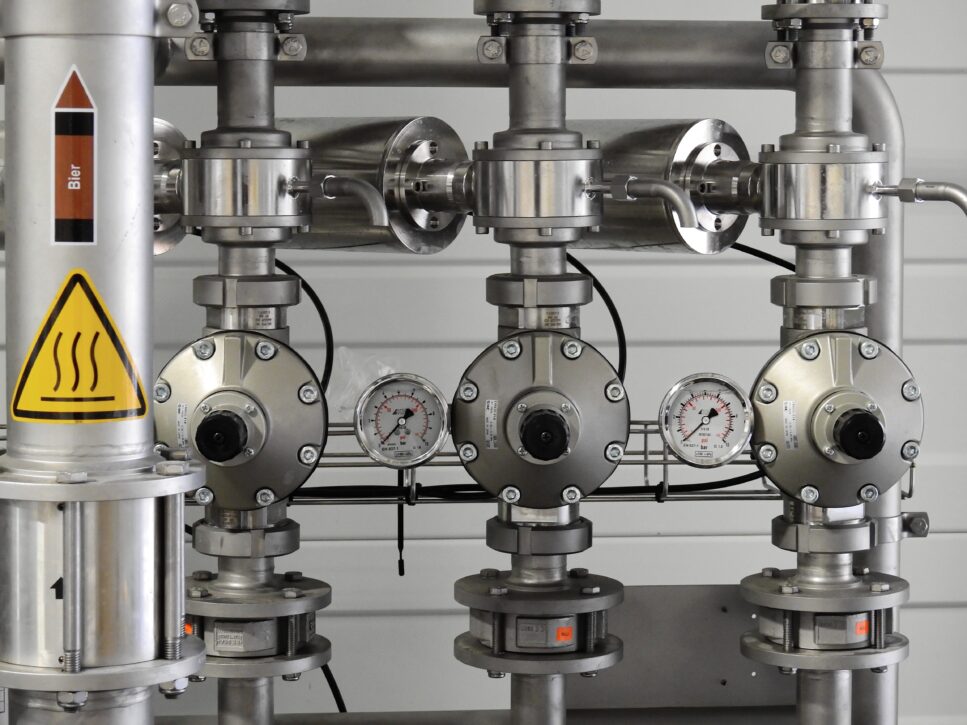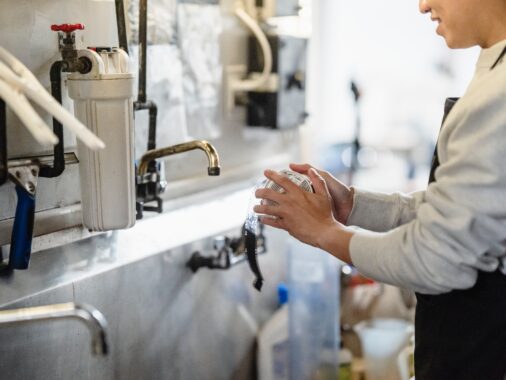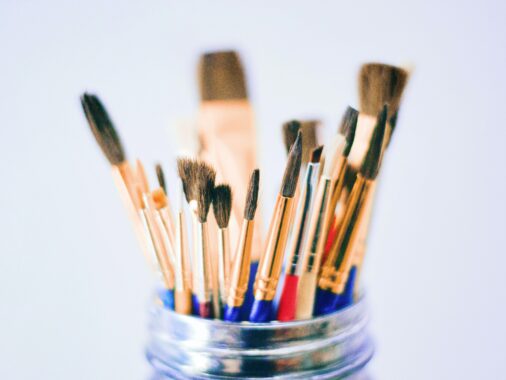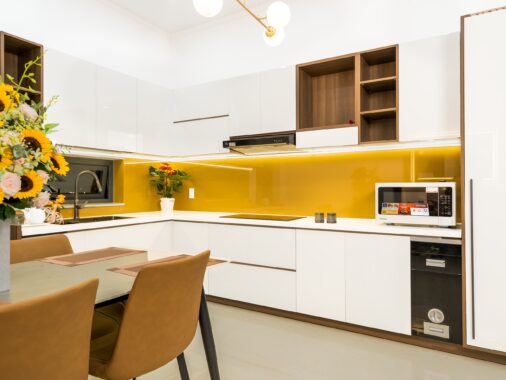Plumbing materials play a crucial role in ensuring the efficient functioning of our water supply and drainage systems. From pipes and fittings to fixtures, selecting the right materials is essential for maintaining a reliable and durable plumbing infrastructure.
In this article, we will explore the various types of plumbing materials available, discuss the factors to consider when making your selection, examine the benefits and drawbacks of different options, delve into emerging trends in plumbing materials, and provide practical guidance for choosing the right materials for your specific needs.
I. Common Types of Plumbing Materials
A. Pipes
- Copper Pipes: Renowned for their durability and corrosion resistance, copper pipes have long been a popular choice in plumbing systems. They offer excellent heat conductivity and can withstand high pressures. However, they can be expensive and may require skilled installation.
- PVC Pipes: Polyvinyl chloride (PVC) pipes are affordable, lightweight, and easy to install. They are resistant to corrosion, chemicals, and scale buildup. PVC pipes are commonly used in drain and vent systems, but they may not be suitable for hot water applications due to their limited heat resistance.
- PEX Pipes: Cross-linked polyethylene (PEX) pipes have gained popularity in recent years. They are flexible, making them easy to install in tight spaces. PEX pipes are resistant to freezing and offer excellent thermal properties. However, they may not be suitable for outdoor use as they can be damaged by UV rays.
- Galvanized Steel Pipes: Galvanized steel pipes were commonly used in the past but have become less prevalent due to their susceptibility to corrosion and scaling. They are durable and can handle high pressures, but they require regular maintenance to prevent rusting.
B. Fittings
- Couplings: Couplings are used to connect two pipes together. They come in various materials such as copper, PVC, and brass. Choosing the right coupling depends on the type of pipes being connected and the application.
- Elbows: Elbows are fittings used to change the direction of the pipe. They come in different angles, typically 45 degrees or 90 degrees, and materials such as PVC, copper, and stainless steel. Properly selected elbows ensure smooth water flow and minimize pressure drop.
- Tees: Tees are fittings shaped like the letter “T” and are used to join three pipes. They are available in different materials, including PVC, copper, and brass. Tees are commonly used for branching water supply lines or creating vent connections.
- Valves: Valves control the flow of water in a plumbing system. There are various types of valves, including ball valves, gate valves, and check valves. The choice of valve depends on the specific application and the desired functionality.
C. Fixtures
- Faucets: Faucets are essential fixtures that control the flow of water in sinks, showers, and bathtubs. They come in a variety of styles and materials, such as chrome, stainless steel, and brass. Choosing high-quality faucets ensures longevity and reliable performance.
- Sinks: Sinks are available in different materials, including stainless steel, porcelain, and composite. Each material has its own advantages in terms of durability, aesthetics, and maintenance requirements. Consider factors such as durability, ease of cleaning, and overall design when choosing a sink.
- Toilets: Toilets are critical plumbing fixtures, and choosing the right one is crucial for water efficiency and functionality. Consider factors such as water-saving features, flushing mechanisms, and ease of cleaning when selecting a toilet.
- Bathtubs: Bathtubs come in various materials, such as acrylic, fiberglass, and cast iron. Consider factors such as durability, ease of maintenance, and aesthetic appeal when choosing a bathtub for your bathroom.
II. Factors to Consider When Choosing Plumbing Materials
A. Durability and Longevity: Evaluate the lifespan and durability of plumbing materials to ensure long-term performance and minimize the need for repairs or replacements.
B. Compatibility with Water Quality: Consider the quality of the water supply, including factors like acidity and mineral content, and choose materials that are compatible to prevent corrosion or scaling issues.
C. Cost and Budget: Plumbing materials vary in cost, so consider your budget while balancing quality, durability, and performance to make the most cost-effective choice.
D. Environmental Impact: Look for environmentally friendly options, such as materials that are recyclable, energy-efficient, or manufactured with sustainable practices.
E. Ease of Installation and Maintenance: Consider the ease of installation and future maintenance requirements to ensure efficient installation and minimize potential disruptions or additional costs.
III. Benefits and Drawbacks of Different Plumbing Materials
A. Copper Pipes
- Pros: Durability, corrosion resistance, excellent heat conductivity, long lifespan.
- Cons: Expensive, skilled installation required, vulnerable to theft in certain areas.
B. PVC Pipes
- Pros: Affordable, lightweight, easy to install, resistant to corrosion and scale buildup.
- Cons: Limited heat resistance, can be damaged by UV rays.
C. PEX Pipes
- Pros: Flexibility, easy installation, freeze-resistant, excellent thermal properties.
- Cons: Limited UV resistance, may not be suitable for outdoor use.
D. Galvanized Steel Pipes
- Pros: Durable, high-pressure tolerance.
- Cons: Susceptible to corrosion and scaling, requires regular maintenance.
IV. Emerging Trends in Plumbing Materials
A. Sustainable Plumbing Materials:
Manufacturers are increasingly producing eco-friendly plumbing materials that minimize environmental impact, conserve water, and reduce energy consumption.
B. Smart Plumbing Technologies:
Integration of smart technologies in plumbing systems, such as sensor-based faucets and smart water meters, allows for efficient water usage, leak detection, and remote monitoring.
V. Choosing the Right Plumbing Materials for Your Needs
A. Evaluating Your Requirements: Assess your specific needs, including budget, intended application, and environmental considerations, to narrow down the options.
B. Consulting with Professionals: Seek advice from plumbing professionals or contractors who can provide expertise and guide you in selecting the most suitable materials for your project.
C. Considering Future Maintenance and Upgrades: Factor in the long-term maintenance requirements and potential future upgrades to ensure your plumbing system remains efficient and adaptable.
Costing of different types of Plumbing Materials in India
The costing of different types of plumbing materials in India can vary based on factors such as the type of material, quality, brand, and location. Prices may also be subject to fluctuations due to market conditions. Here is a general overview of the approximate cost ranges for common plumbing materials in India:
- PVC Pipes:
- 1/2-inch to 1-inch diameter: Rs. 15 to Rs. 40 per linear foot
- 1.25-inch to 2-inch diameter: Rs. 20 to Rs. 60 per linear foot
- CPVC Pipes:
- 1/2-inch to 1-inch diameter: Rs. 40 to Rs. 70 per linear foot
- 1.25-inch to 2-inch diameter: Rs. 50 to Rs. 90 per linear foot
- PEX Pipes:
- 1/2-inch to 1-inch diameter: Rs. 50 to Rs. 100 per linear foot
- 1.25-inch to 2-inch diameter: Rs. 80 to Rs. 150 per linear foot
- Copper Pipes:
- 1/2-inch to 1-inch diameter: Rs. 150 to Rs. 300 per linear foot
- 1.25-inch to 2-inch diameter: Rs. 200 to Rs. 400 per linear foot
- Fittings:
- PVC fittings: Rs. 5 to Rs. 50 per piece, depending on size and type
- CPVC fittings: Rs. 10 to Rs. 100 per piece, depending on size and type
- Copper fittings: Rs. 20 to Rs. 200 per piece, depending on size and type
- Valves:
- Ball valves: Rs. 100 to Rs. 500 per piece, depending on size and quality
- Gate valves: Rs. 200 to Rs. 800 per piece, depending on size and quality
- Check valves: Rs. 100 to Rs. 400 per piece, depending on size and quality
- Bathroom Fixtures:
- Faucets: Rs. 500 to Rs. 5,000 per piece, depending on brand and design
- Showerheads: Rs. 200 to Rs. 2,000 per piece, depending on brand and type
- Sanitaryware (toilets, basins): Rs. 2,000 to Rs. 15,000 per piece, depending on brand and style
It’s important to note that these prices of Plumbing Materials are rough estimates and can vary based on various factors. It is recommended to check with local suppliers or consult professionals to get accurate and up-to-date pricing information for your specific location and requirements.
Renowned Companies of Plumbing Materials in India
In India, several renowned companies manufacture and supply plumbing materials. Here are some well-known companies in the plumbing industry in India:
- Jaquar Group: Jaquar is one of the leading manufacturers of various Plumbing materials that includes bathroom fittings, faucets, showers, sanitary ware, and other plumbing products. They are known for their extensive range of stylish and high-quality products.
- Astral Pipes Limited: Astral Pipes is a prominent manufacturer of CPVC and PVC pipes and fittings. They offer a wide range of plumbing solutions for residential, commercial, and industrial applications.
- Supreme Industries Limited: Supreme Industries is a well-established company of various Plumbing materials that manufactures a diverse range of products, including PVC pipes, fittings, and water storage tanks. They are known for their quality and reliability.
- Prince Pipes and Fittings Ltd: Prince Pipes and Fittings is a leading manufacturer of various Plumbing materials like PVC pipes, CPVC pipes, and fittings. They offer a wide range of plumbing solutions for various applications.
- Ashirvad Pipes Pvt. Ltd: Ashirvad Pipes is known for its CPVC and UPVC pipes and fittings of various Plumbing materials. They are recognized for their high-quality products and commitment to innovation.
- Cera Sanitaryware Limited: Cera is a renowned company that specializes in sanitaryware, faucets, and tiles of various Plumbing materials. They are known for their stylish and innovative bathroom solutions.
- RAK Ceramics India Pvt. Ltd: RAK Ceramics is a leading manufacturer of of various Plumbing materials like ceramic tiles, sanitary ware, and faucets. They offer a wide range of products known for their quality and aesthetic appeal.
- Kajaria Ceramics Limited: Kajaria Ceramics is a well-established company that manufactures ceramic tiles, sanitary ware, and faucets. They are known for their wide range of designs and high-quality products of various Plumbing materials.
These companies have a strong presence in the Indian market and are recognized for their quality, reliability, and customer satisfaction.
FAQs Section
Compatibility with water quality is important to prevent corrosion or scaling issues that can affect the longevity and performance of the plumbing system.
Sustainable plumbing materials include those that are recyclable, energy-efficient, and manufactured with sustainable practices, such as water-saving fixtures and pipes made from recycled materials.
Some emerging trends in plumbing materials include the development of eco-friendly options and the integration of smart technologies for efficient water usage and remote monitoring.
Consulting with professionals, such as plumbing experts or contractors, is important to gain expert advice and guidance in selecting the most suitable materials based on specific needs and requirements.
Final Thoughts on Choosing the Right Plumbing Materials
Selecting the appropriate plumbing materials is crucial for a well-functioning and reliable plumbing system. Consider factors such as durability, compatibility with water quality, cost, environmental impact, and ease of installation and maintenance when making your choices.
Stay informed about emerging trends in plumbing materials and technologies to make sustainable and efficient decisions. By carefully evaluating your requirements and seeking professional advice, you can ensure that your plumbing system performs optimally for years to come.





